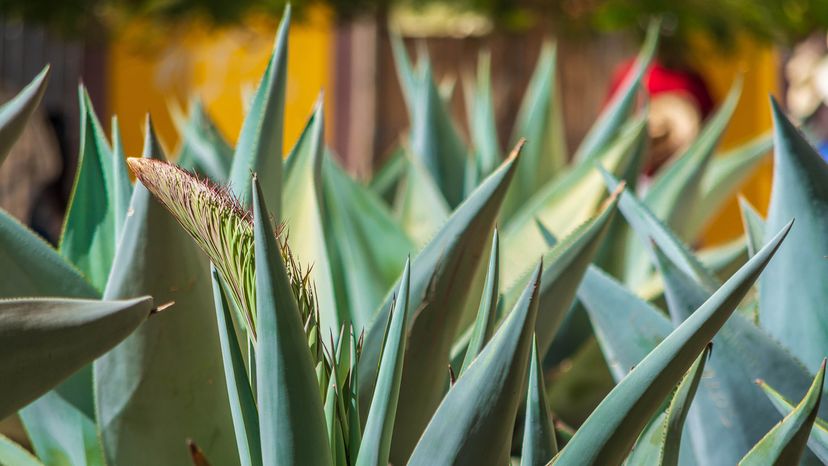Traditionally, the word "mezcal," which comes from the Nahuatl words "metl" (agave plant) and "ixcalli" (roasted), was used to describe all agave spirits, including tequila. Perhaps you've heard the phrase, "All tequila is mezcal, but not all mezcal is tequila"?
That all changed in 1995, when mezcal received its denominación de origen (DO).
Mezcal Requirements
In order to be called mezcal, a beverage must meet the following requirements:
- Made from fermented 100% maguey or agave juice. According to the Oxford Companion to Spirits and Cocktails, about 20 to 40 of the almost 300 different species of agave plants (genus Agavaceae) are used to make mezcal.
- 35 to 55 percent alcohol by volume
- Produced in one of 10 Mexican states: Zacatecas, Durango, Guerrero, Michoacán, San Luis Potosí, Guanajuato, Tamaulipas, Puebla, Sinaloa or Oaxaca
Defining mezcal can be tricky — since there are so many varieties — and for so long, "mezcal" served as a sort of catchall term.
Where Is Mezcal Made?
As of this writing, 10 Mexican states can legally produce mezcal: Zacatecas, Durango, Guerrero, Michoacán, San Luis Potosí, Guanajuato, Tamaulipas, Puebla, Sinaloa and Oaxaca. The Mexican government regularly adds new states to the list, with the most recent addition being Sinaloa in 2021.
However, it's likely the mezcal you're sipping comes from Oaxaca. According to the Oxford Companion to Spirits and Cocktails, Oaxaca produces 90 percent of the world's mezcal.
Mezcal Production
The Norma Obligatoria Mexicana (NOM) recognizes three types of mezcal: mezcal, mezcal artisanal and mezcal ancestral, defined by their cooking, grinding, fermentation and distillation processes.
- Cooking method: In ancestral mezcal, the agave hearts, also known as agave piñas, are cooked in traditional pit ovens. The traditional roasting process is why mezcal tastes smoky. Artisanal mezcal may be cooked in masonry ovens, and regular mezcal can be cooked in pressurized ovens.
- Shredded method: To qualify as ancestral mezcal, the cooked agave must be shredded by hand with a mallet or using simple mill such as a tahona (a stone wheel traditionally drawn by a donkey). Mezcal artisanal can be ground in a trapiche (mill with a wooden wheel) or desgarradora (mechanical shredder). Regular mezcal can be ground in a tren de molinos (industrial mechanical crusher) or difusor, which uses hot water to break down the agave.
- Fermentation vessel: Ancestral and artisanal mezcal should be fermented in open-top natural vessels made from stone, wood or animal skins. Regular mezcal may be fermented in stainless steel tanks.
- Distillation process: Mezcal ancestral is distilled over fire in a clay or wood pot. Mezcal artisanal is can be distilled in copper stills or over fire in a copper pot. Regular mezcal can be distilled in continuous or column stills.
Mezcal Aging and Infusions
Aging is more common with tequila than mezcal, but you can find some aged mezcal on the market.
- Mezcal joven ("young") or blanco ("white") is translucent, un-aged mezcal. Most mezcal is joven.
- Mezcal madurado en vidrio ("matured in glass") has been aged in its bottle for at least one year. It must be kept underground or in a light- and humidity-stabilized room to preserve the flavor.
- Mezcal reposado ("rested") has been aged between two and 12 months in wooden containers. This mezcal starts to take on a light amber color. Some mezcal purists believe aging mezcal in wood obscures its flavor.
- Mezcal añejo ("aged") has aged in barricas (wooden barrels) for at least one year and has a deep caramel color.
- Flavored mezcal may be labeled "abocado con," which means flavorings (like honey, lemon or maguey worm) have been added to the finished mezcal, or "distillado con," meaning the mezcal was distilled with ingredients like raw chicken breast or mole.
